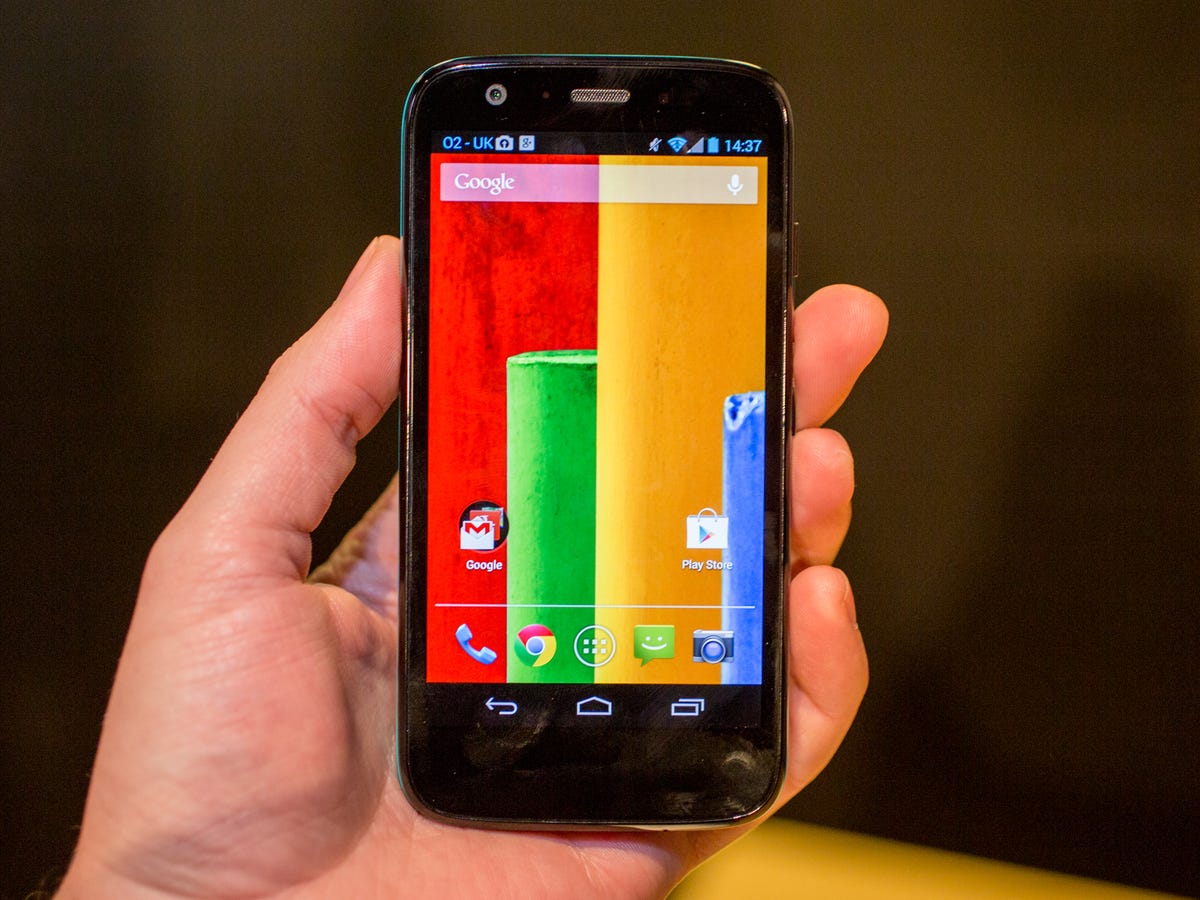Google’s inexpensive, new Android phones mean the company has a real chance at transforming the wireless industry — something it attempted to do nearly four years ago with the Nexus One.
In October, the company released the Nexus 5, a top-end phone built by LG Electronics that has a remarkably low price of $349 for a 16GB model — unlocked and with no contract. On Wednesday, Google announced the Moto G, which costs $179 for an 8GB model, also unlocked and off contract.
An unlocked, off-contract phone can be moved from one carrier to another simply by buying a new SIM card, effectively avoiding the typical two-year contracts that network operators love. For the carriers, the contracts cut down on customer churn. But to consumers, they mean big barriers for anyone who’s dissatisfied with network coverage or other factors. For example, if one carrier introduces a competitive new plan, contract termination fees likely will make a person think twice about switching.
In a world where people buy unlocked devices, smartphones become more like PCs. You pay up front then do what you want. Customers can switch phones more easily, for example. Like the latest and greatest? It’s easy to sell your used phone whenever you want.
Google first tried to shake things up in 2010 with the Nexus One, which the company sold directly to customers for $529. But the Nexus One vision flopped when carriers like Verizon and Vodafone didn’t play ball, among other troubles.
A few years and one $12.5 billion acquisition of Motorola Mobility later, Google has a chance. The prices it charges for its new phones are getting close to the subsidized prices that most customers encounter when buying phones — initial prices that might look good but that don’t factor in 24 months of payments made as part of a network service subscription.
We got a taste of this with the Nexus 4, whose price plummeted, but only after it had lost some of its initial luster. And the pure-Android versions of the HTC One and Samsung Galaxy S4 — at $600 and $650, respectively, are too expensive to move the needle.
But Google evidently wanted to see lower handset prices — and of course, it can effectively subsidize phones through its online services. Google makes money through ads on services such as search, maps, and YouTube, and it offers subscriptions for music and Google Apps; a big part of Android’s raison d’etre is increasing usage for such services. So it has a good way to justify lower prices.
As Motorola pointed out during a press conference on Wednesday, you could buy four Moto G phones for the same price as Samsung’s flagship Galaxy S4. The two phones have plenty of differences, to be sure — the Moto G isn’t aimed at premium buyers — but that’s still a powerful price comparison to make.
Motorola’s Moto G is a budget model, though Google touted its performance at its press conference. It has a 4.5-inch 1280 x 720 display; a 1.2GHz quad-core Qualcomm Snapdragon 400 processor; a 5MP primary camera and 1.2MP front-facing camera; and a 2,070mAh battery. It runs Android 4.3, but Google promised an upgrade to the new 4.4 KitKat version in January. Also, a $199 16GB model will be available soon.
Another difference: Moto G doesn’t support 4G LTE networks as higher-end phones do.
Even without LTE connectivity, those specs mean Google is selling modern, useful phones — a strong contrast to today’s budget options, in the view of Motorola CEO Dennis Woodside. “Next year, 500 million people are going to buy a smartphone for around $200. Up until now their choice had been to buy cheap phones with last year’s technology or a phone that was several years old,” he said at the press conference.


Andrew Hoyle/CNET
There still are plenty of hurdles in the way of Google’s vision, though. One of them is wireless spectrum: Different carriers bid for different wireless frequencies, and a particular phone may not work on another network. The Nexus 5, for example, works on the LTE networks of AT&T, T-Mobile, and Sprint, but not Verizon.
Another factor is that carriers still are powerful in phone sales and support. It’s convenient to buy a mobile phone and wireless service at the same time, and carriers have countless retail stores around the world. Google’s direct-sales model is still the exception, not the rule.
Last, Motorola has been a drag on Google earnings, and Moto and Nexus products complicate the company’s relationships with handset makers. That means the business case for Google can’t be a slam dunk.
But Google isn’t demanding an overnight revolution, and its new prices show it’s willing to take a very un-Apple approach when it comes to handset profit margins. With the Moto and Nexus brands now offering competitive pricing, Google is showing it may have what it takes to reshape the mobile market.



